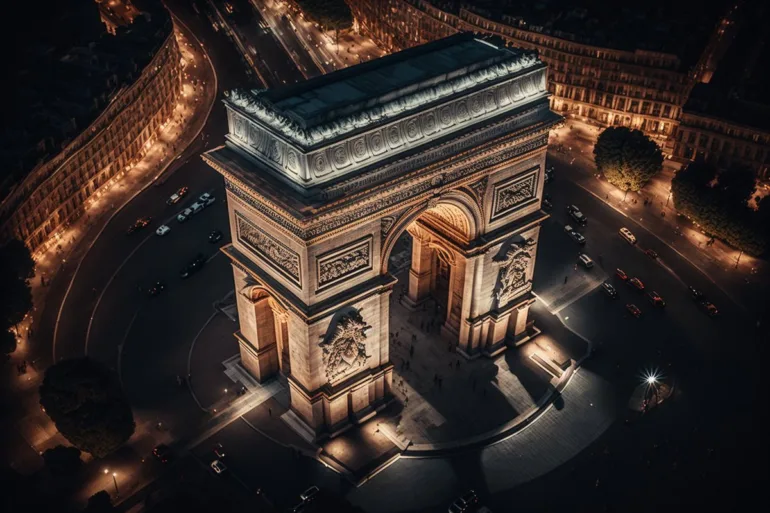TL;DR:
- 35% of Americans can’t distinguish between real and AI-created images
- Rise in fake landmark images due to advancements in digital technology.
- Fake landmark photos can influence our perception of reality.
- Industry expert highlights the strength of AI and the difficulties in detecting AI-generated material.
- Countering fake landmark photos requires education and investment in technology.
- False landmark photos can have a negative impact on industries such as tourism and education.
- Education is needed to train people to recognize fake photos and understand their impact on society.
- Investment in technology for detecting fake photos is necessary.
- AI-generated photos are not yet perfect and can have variations from genuine photos, but they can produce a large number of unique images quickly.
Main AI News:
In today’s digital age, the ability to manipulate photographs has become increasingly sophisticated, leading to a rise in the creation of fake landmark images. A recent survey of 1,000 Americans conducted by an AI-powered recommendation engine platform found that 35% of respondents could not differentiate between real and fake landmark photos. This highlights the impact of digital tampering on our perception of reality and how it affects the way we view the world.
From digitally generated replicas of renowned landmarks to manipulated images that appear to show damage or vandalism, fake landmark photographs take many forms. Although they may seem harmless, they can have a significant impact on our understanding of the world. The survey results showed that 33% of Americans couldn’t identify the real Eiffel Tower, nearly 50% couldn’t tell which Taj Mahal image was real, and only 66% could accurately identify the “Hollywood” sign.
Tom Salvat, an industry expert, stated that AI is revolutionizing content and marketing, automating complex tasks, personalizing experiences, and providing data-driven insights for improved productivity, effectiveness, and profitability. The survey results further emphasize the strength of AI and the challenges in detecting AI-generated material, with 35% of Americans unable to distinguish between real and fake photos.
Countering the proliferation of fake landmark photographs is a complex issue that requires a multi-pronged approach. One of the biggest challenges is that these fraudulent images can be highly convincing, making it difficult for people to differentiate between what is real and what is not.
The impact of false landmark photos extends beyond social media and can have serious implications for industries such as tourism and education. Misleading images can lead to disappointment and frustration for travelers, as well as a lack of appreciation and respect for actual landmarks.
Education is crucial in addressing this issue. People need to be trained to recognize fake photos and understand the broader impact they can have on society. This might involve training in the technology used to alter images and the warning signs of fraudulent photos.
Investing in technology capable of detecting fake photos is another important step. There are already several programs available that can analyze images and determine their authenticity, and as technology advances, these tools will become even more sophisticated.
It’s important to note that AI-generated photos are not yet perfect and can have variations from genuine photos. They may appear imprecise or pixelated in some situations and lack the level of detail found in real images. However, one of the key benefits of AI-generated photos is the ability to produce a large number of unique images quickly, which can be useful in areas such as advertising and e-commerce.
Conlcusion:
The increasing sophistication of digital technology has led to a rise in fake landmark images, making it difficult for people to distinguish between real and AI-created photographs. This has significant implications for various industries, including tourism and education. To address this issue, there is a need for education to train people to recognize fake photos and understand their impact on society, as well as investment in technology for detecting fake photos.
From a market perspective, this highlights the importance of being able to differentiate between real and fake images in various industries, particularly in areas such as advertising and e-commerce. Companies may need to invest in technologies to ensure the authenticity of their images, and there may be opportunities for businesses that specialize in detecting fake photos. Additionally, there may be a demand for educational resources and training on how to identify fraudulent images.

